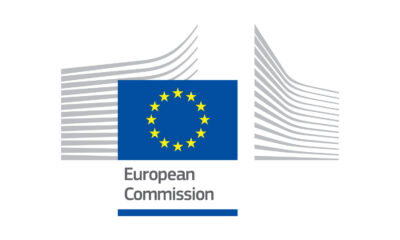Travel
London has renamed some Tube lines – here’s why Londoners aren’t happy
Reactions have been a mix of incredulity over one line’s name and dry British humour mocking the announcement.
London’s underground rail system is arguably one of the most iconic in Europe, if not the world – and now there’s a significant change to the well-known map.
Transport for London (TfL) have announced they are rejigging – and renaming – the routes that run over rather than underground lines into six distinctive specific routes.
All named after parts of the capital city’s heritage, the new designations have prompted mixed reactions from Londonders.
What do we know about the changes to the Overground line?
TfL announced last year that the aim of the renaming was to give the routes distinct identities, to make it easier for passengers to navigate the network.
They are currently all marked with a bright orange colour, which has led to some nicknaming it the “Ginger’ line. The newly named lines will be unlikely to be confused with one another.
The new names for London’s overground lines are:
• The Lioness line, which will be marked with yellow parallel lines. Running through Wembley in west London – often referred to as the home of football – it pays tribute to the England women’s football team, who are nicknamed the Lionesses.
• The Mildmay line, featuring blue parallel lines, has been named after the eponymous hospital in Shoreditch, east London, which played a significant role in the HIV/Aids crisis of the 1980s.
• The maroon parallel lines of the Weaver line mark a route through stations including Liverpool Street, Spitalfields, Bethnal Green and Hackney, all well known for their historical importance in the textile trade.
• Marked by green parallel lines, the Suffragette line was named to celebrate how London’s East End working-class community fought for women’s rights last century. It also has particular significance as it runs to Barking, the former home of the longest-surviving suffragette, Annie Huggett, who died aged 103 in 1996.
• The Liberty line, with its grey parallel lines, got its name in order “to reference the historical independence of the people of the borough of Havering”, through which it runs, as well as the celebrating “a defining feature of London”, TfL say.
• The Windrush line, which features red parallel lines, runs through a number of areas – including Peckham Rye, West Croydon and Dalston Junction – with strong ties to Caribbean communities, many who came to the UK on the WIndrush ship from Jamaica in 1948.
Why has the Windrush line caused controversy?
While the Mayor of London, Sadiq Khan, said the new names were “honouring and celebrating different parts of London’s unique local history and culture”, it’s thought the project has cost some £6.3m (€7.36m) to complete. That has not gone down well with many Londoners, especially considering that, this week, the UK slipped into recession.
However, it is the Windrush line which has raised most eyebrows.
While publisher Sharmaine Lovegrove took to X – formerly Twitter – writing: “Deeply moved to tears that my home train station (Clapham Junction) is part of the new train line rebrand and will be named WINDRUSH LINE – a wonderful homage to my grandparents’ generation who are victims of the hostile environment and pioneers of rebuilding postwar Britain,” many others took a different approach.
Some people accused the UK government of using the renaming as a hollow gesture, while victims of the Windrush scandal and their descendants are waiting for compensation.
The scandal began in 2018, concerning people who were wrongly detained, denied legal rights, threatened with deportation and, in at least 83 cases, wrongly deported from the UK by the Home Office.
It’s since been proven that many of those affected had been born as British subjects and had arrived in the UK before 1973, as members of the “Windrush generation”.
Sadiq Khan, though, has recently called on prime minister Rishi Sunak to speed up access to the Windrush compensation scheme and reduce the burden of proof on claimants. He also wants the government to help victims with losses to private pensions and future earnings – something the scheme doesn’t currently do.
The move comes as researchers at University College London discovered a sharp downturn in mental health for Black Caribbean people in the wake of tougher Home Office policies brought in by former prime minister Theresa May when she was home secretary from 2010 to 2016.
It wouldn’t be the UK without tongue-in-cheek humour
Of course, the British – for all their demands for justice and equality – are famously able to poke fun at themselves and the renaming debacle is no exception.
Almost as soon the announcement was made, memes mocking the names popped up all over social media. Here are a few of our favourites:
This post from BBC satire show ‘Have I Got News For You’ renames the lines as London cliches – think the ‘No Eye Contact Line’ and the ‘£9 for a Pint’ line – referring to the high price of alcoholic drinks in the capital.
Another post from X user Steven Perkins alludes to the iconic Tudor monarch Henry VIII’s six wives – and the fates which befell them.
Also on X, Katie Packer renamed the lines as iconic – yet very niche – quotes from British humour.
Work to rebrand the new lines will start immediately – and the main rollout of the new identities is likely to take place at some point in the autumn, with the revamp set to be completed by the year’s end.
Travel
Is Norway introducing a visitor tax? Here’s all we know about its proposal to tackle overtourism
Norway has updated its plans for a visitor tax that hopes to tackle the negative effects of overtourism.
The government has announced it is lowering the proposed fee that local authorities will be able to charge tourists.
Minister of Trade and Industry Cecilie Myrseth has confirmed the tax will now be three per cent of the cost of an overnight stay – instead of five per cent.
Norway is experiencing a surge in arrivals as holidaymakers seek cooler climes, hitting a record-breaking 16.7 million overnight stays during the summer months of 2024.
Norway is bringing in a tourist tax
Norway’s tourist tax will be an optional charge that can be levied at the discretion of local authorities.
The revenue will be used to fund projects that will benefit both residents and tourists, such as maintaining hiking trails and installing public toilets.
If implemented by a municipality, the levy will apply to visitors staying in all overnight accommodation, including hotels, hostels, campsites and short-term rentals.
Local authorities can also adjust the fee depending on the season, Myrseth confirmed.
“It is not the case that we have year-round tourism throughout the country, but in some places, there are parts of the year that are particularly demanding, and the expenses that the residents have to pay for are particularly high,” Myserth told Norwegian public broadcaster NRK.
At the moment, there is no fixed date for the introduction of the visitor fee, though reports say it may come in as early as this summer.
The government still needs to have the bill detailing the tax approved by parliament, but several parties appear to be in opposition to the new levy.
The travel and tourism branch of the Confederation of Norwegian Enterprise (NHO) has warned it could put tourists off visiting the destination.
“We are now in a very serious situation. Introducing the tourist tax now is, in any case, madness,” a spokesperson from the NHO told NRK earlier this week.
The proposed tax has also been criticised for only targeting overnight visitors, leaving cruise passengers, day-trippers, and campervanners staying overnight in free public areas not required to pay.
Opponents argue that these are some of the most damaging kinds of visitors, particularly in frequently overwhelmed cruise destinations like the Lofoten Islands and Geiranger fjord.
Norway is experiencing a tourism surge
The Norwegian government has been mulling the introduction of a tourist tax for several years in reaction to surging visitor numbers.
Sweltering temperatures in traditional summer destinations like Italy and Spain are driving a trend for ‘coolcations’ in northern Europe.
Bolstering this is the rising interest in experiencing after-dark phenomena – dubbed ‘noctourism’ – such as the northern lights.
Norway is considered one of the best places for aurora-chasing, and the celestial spectacle is proving to be particularly visible in 2025.
Travel
Rattlesnakes, rocks and a Rolex: The weirdest things left behind in unclaimed luggage
There’s nothing more frustrating than arriving at your destination and discovering your bag didn’t make it.
In 2024, over 36 million bags were mishandled by airlines – either lost, stolen or damaged. That’s around seven bags for every thousand checked in. While many bags are ultimately reunited with their owner, a small percentage are lost forever.
Most bags contain nothing more than mundane items of clothing and a few toiletries. But some people travel with much stranger belongings – a suit of armour, a toilet seat, and even a glass eye have all been retrieved from lost bags over the past year.
According to Unclaimed Baggage, a US-based retailer that sells items from unclaimed airline luggage, these odd items are just the tip of the iceberg. Its Found Report uncovers the strangest, most expensive and most commonly lost items reclaimed from airline baggage.
“Since 1970, we’ve unpacked more than just belongings—we’ve discovered the unique stories behind travellers’ journeys,” said CEO & President Bryan Owens. “From the most valuable to the trendy, the ‘Found Report’ gives readers a first-class seat to the most compelling tales uncovered from the previous year.”
Weird and wonderful finds that boggle the mind
Some of the items found by Unclaimed Baggage in travellers’ suitcases last year are head-scratchingly strange.
Take, for instance, the full breastplate from a medieval suit of armour or the Roman soldier’s helmet. The company didn’t say if these came out of the same bag, but given they’re from different historical periods, they probably didn’t – no self-respecting live-action role-player would dare mix up their eras.
One bag contained a freeze-dried chicken’s foot, which you could wash down with a jar of whiskey containing a preserved rattlesnake from another. If that creeps you out, how about opening a bag to find no clothes, no toothpaste, just dozens of enormous spiders and beetles preserved in cases.
Historical items were flying around the world more than you’d expect. Passengers’ luggage contained all sorts of ancient treasures, from an antique mustache curler to a decades-old magician’s hat.
Probably the most disturbing find, however, was an antique French book on performing exorcisms. Who knows what the ultimate intent for that particular item would have been?
And then there was the just plain weird – a silicon pregnancy belly, a pair of silicone butt pads and a full set of dentures complete with tooth jewels.
One bag in particular had the Unclaimed Baggage workers hot under the collar. The team said, “There are heavy bags, and then there was this bag.”
When the heavyweight suitcase was hauled in to be unpacked, workers were eager to see what was inside. Gold bars? Ancient artefacts? Something special for sure, given its ridiculous weight.
Sadly, the case opened to reveal… rocks. Nothing else. Just rocks. Perhaps this was a misguided geologist’s collection or some strange attempt at weight training, but we’ll never know.
High class luxuries in unclaimed baggage
Not all the items recovered were just plain weird – some were weirdly expensive, raising questions about why people wouldn’t try harder to track them down.
The most expensive item found in an unclaimed bag was an 18-karat white gold solitaire diamond ring, thought to be worth around $39,000 (€34,000). There was also a gold President Oyster Rolex watch, valued at around $20,000 (€17,500).
Among the other lost luxuries were designer garments from the likes of Chanel and Alexander McQueen worth thousands, and pieces of Louis Vuitton luggage that on their own would fetch more than $10k (€17,500+).
Expensive cameras, designer dog carriers and a $7,000 (€6,200) handmade flute all came out of lost bags last year too.
What else do we leave behind on our travels?
It’s not only lost luggage from airlines that tell a tale about how we travel today. Uber’s annual lost and found index, also released this week, details what its drivers find left behind in their cars.
Predictably, the most commonly lost items include phones, wallets, keys and headphones. An incredible 1.7 million phones were left in rideshare cars last year, and more than 70 Nintendo Switch consoles.
But those aren’t the strangest things Uber drivers have found, not by a long way. Among the most ‘unique’ finds were a chainsaw, a DNA testing kit, 10 live lobsters and a urinal.
Apparently we’re prone to leaving things in hotel rooms, too. Hotels.com released its ‘Innsights’ report last year, revealing a car tyre, an engagement ring, a tooth, two full-leg casts, stacks of cash, a pet lizard, and a chick were all among the items forgotten by travellers when they checked out.
TFL, the company that runs the London public transport network, has a warehouse of unclaimed belongings and gets around 6,000 new items every week. Among these lost items have been a box of cooked frogs, a glass jar filled with bats, a Dalek costume and a puffer fish.
How to avoid losing your luggage
While the contents of some of these bags beg the question ‘why’, the fact remains that if you don’t want your weird travel companions to be discovered, don’t lose your bag.
Avoiding checking a bag in is a great strategy, as your luggage will stay with you at all times. Some airlines have quite generous allowances for carry-on baggage, so consider if you can avoid the unknown by travelling light.
If you do need to check in a bag, make sure you can spot it from a mile away. Bright straps, coloured ribbons and unique stickers will all help your luggage stand out on the carousel among all the other black cases.
Many lost bag incidents occur during connecting flights. If you can, choose a direct flight to minimise the chance of disruption during the connection.
For the ultimate peace of mind, Apple’s AirTag product has become a passenger favourite for keeping an eye on your bag. As they rely on Bluetooth via the ‘Find My’ network, tracking can be more reliable than GPS alone and can help you pinpoint a missing bag rapidly from anywhere in the world.
If the worst does happen and you become separated from your luggage, it’s essential to report it immediately to the company you were travelling with. For air travel, the airport will ask you to complete a Property Irregularity Report (PIR), which will generate a reference number to help you track progress.
While the airline is looking for your luggage, they will usually reimburse you for essential items you need to purchase, such as toiletries or clothes. If after 21 days the bag still hasn’t been found, you’ll be able to claim compensation.
Airlines have a maximum liability for lost luggage, typically around €1,600 per passenger, but it does vary. Any unclaimed luggage is usually sold, donated or disposed of.
In the US, airlines will search for the owners of bags for 90 days, but if the luggage is still unclaimed by that point, it ends up with Unclaimed Baggage at its store in Scottsboro, Alabama. The contents are catalogued and either placed for sale in its retail store, repurposed for charity or recycled.
Ultimately, you can spare yourself the grief of losing a treasured possession by simply not travelling with it at all. While you might love them very much, it’s probably best to leave the armor, arachnids, and ancient artefacts where they belong—safely at home.
Travel
New competitors could slash Channel Tunnel rail fare by 30 per cent in the next 15 years
In the next 15 years, passengers on the Channel Tunnel rail line could triple, while fares could fall by almost a third.
These are the findings of a new report conducted by consultancy Steer and commissioned by London St Pancras Highspeed, owner of the tracks and station serving the Channel Tunnel.
The study forecasts a rise in passenger numbers from the current level of 11 million a year to 35 million by 2040.
This anticipated growth, along with increased competition on the route, could drive fares down by up to 30 per cent, the analysis concludes.
Plans are already in motion to double the international passenger capacity at St Pancras. At present, it supports up to 1,800 international passengers per hour, but the operator wants to see this increased to as many as 5,000 passengers an hour.
To facilitate this, London St Pancras Highspeed and Eurotunnel are collaborating to shorten journey times, improve timetable coordination and introduce more frequent services. Modifications to the station itself include reconfiguring existing spaces and constructing new facilities to cope with more passengers.
Why can we expect Channel Tunnel fares to decrease?
The 30 per cent fare reduction is projected to come as a result of increased competition and the growth in demand for rail travel through the Channel Tunnel.
Currently, Eurostar is the sole operator on the Channel Tunnel route. As with any business existing in a monopoly, fares and pricing in the absence of competition become artificially inflated.
With new operators vying to get their trains on the route, more options will stimulate competition, naturally driving down prices.
There are also the economies of scale to consider. The expected growth in demand could mean the overall cost per passenger for operators will decrease. Fixed costs of train operation can be spread across a larger number of passengers, allowing companies to price their fares a little lower.
Adding to the potential for cheaper cross-channel rail connections are new financial incentives introduced by London St. Pancras Highspeed.
Under the International Growth Incentive Scheme, new and existing operators on the HS1 line can unlock rebates of £1 (€1.17) per additional passenger carried, which will be paid into a joint fund for marketing and growing passenger demand.
New services can attract discounts on the fees for using the line of up to 50 per cent in year one, 40 per cent in year two and 30 per cent in year three.
The report leans heavily into the shift in consumer behaviour and the move towards more sustainable travel options. As the passenger base increases, operators will be able to offer lower fares and compete more fairly with budget airline options.
Which train operators are bringing the competition to the Channel Tunnel
The Channel Tunnel has been open to competitors since 2010, but the high costs of launching services and acquiring trains to run the route have deterred new operators from competing.
Recent regulatory changes and the launch of incentives have seen a newfound interest in cross-channel rail services, and several operators have already thrown their hats in the ring to operate services.
The Virgin Group has stated a desire to launch cross-channel train services by 2029. Discussions are already underway for a fleet of trains to operate the service.
Competing for access is a Spanish-led consortium known as Evolyn. The company wants to launch high-speed services between London and Paris and has indicated it has reached an agreement with Alstom to purchase 12 high-speed trains for the service.
Also in the mix is a start-up called Gemini Trains. led by Lord Tony Berkeley, a British aristocrat and former Eurotunnel engineer. Gemini has applied for an operator’s license to service Paris, Strasbourg, Cologne, and Geneva with a fleet of 10 trains by 2029.
Most recently, Italian state railway Ferrovie dello Stato Italiane has been revealed to be studying cross-channel services and is working with Evolyn towards this goal.
Other operators have previously expressed an interest in open access to the Channel Tunnel. Deutsche Bahn showcased a high-speed train at London’s St Pancras in 2010, signaling its intent to connect London with destinations in Germany, such as Frankfurt and Cologne. However, it has not yet officially joined the bidding war for services.
Where could you go via the Channel Tunnel, and when?
While discussions are still at early stages, the proposed new competitors on Channel Tunnel services could open direct rail connections to many more European cities from London.
Paris is a key destination and will provide direct competition with Eurostar. Ferrovie, Virgin Group and Evolyn have all mentioned Paris services in their communications to date.
As well as this, Virgin wants to connect London with Amsterdam and Brussels, while Getlink wants to run services directly to German and Swiss cities, including Frankfurt, Cologne, Geneva, Zurich, and Milan.
Most of the companies are targeting a launch between 2029-2030. However, Evolyn is aiming for a more ambitious 2026 start, though this timeline may prove optimistic given the challenges of entering the market.
From finding space for storage and maintenance of trains to money for the purchase of the equipment itself, the barriers to entry remain high.
Positive signals were received in early April when the UK’s Office of Road and Rail concluded that Eurostar must provide access to new operators at Temple Mills depot, a significant hurdle for any new operator. It also said the fees on the HS1 line were too high at €30 per mile – the most expensive in Europe.
Virgin Group declared this to be “a green signal for competition,” although Eurostar maintains Temple Mills is at capacity and can’t support even one new operator.
New trains in the Channel Tunnel will take time, but increased competition will undoubtedly serve to lower prices for the traveling public.
In addition to lower fares, increased competition could significantly reduce the carbon footprint of travel as more passengers opt for this low-emission option. High-speed rail can reduce CO2 emissions by up to 90 per cent compared to flying.
-

 EU & the World6 days ago
EU & the World6 days agoWho Is Buying TikTok? What Might Happen to the App
-

 Politics7 days ago
Politics7 days ago6 tips to spot and stop information manipulation
-

 Politics7 days ago
Politics7 days agoWinners of 2025 EU prize for women innovators announced
-

 Sports6 days ago
Sports6 days agoAlexander Zverev dates Jannik Sinner in Rome final
-

 Sports5 days ago
Sports5 days agoElisa Longo Borghini: sports career, personal interests, family, awards and honors
-

 Health & Society6 days ago
Health & Society6 days agoHydration Hacks – The Underrated Role of Water in Natural Healing
-

 Sports5 days ago
Sports5 days agoAustralia in celebration at Blue Monster
-

 Sports5 days ago
Sports5 days agoFederica Brignone, resignation date set: “Thank you all”









